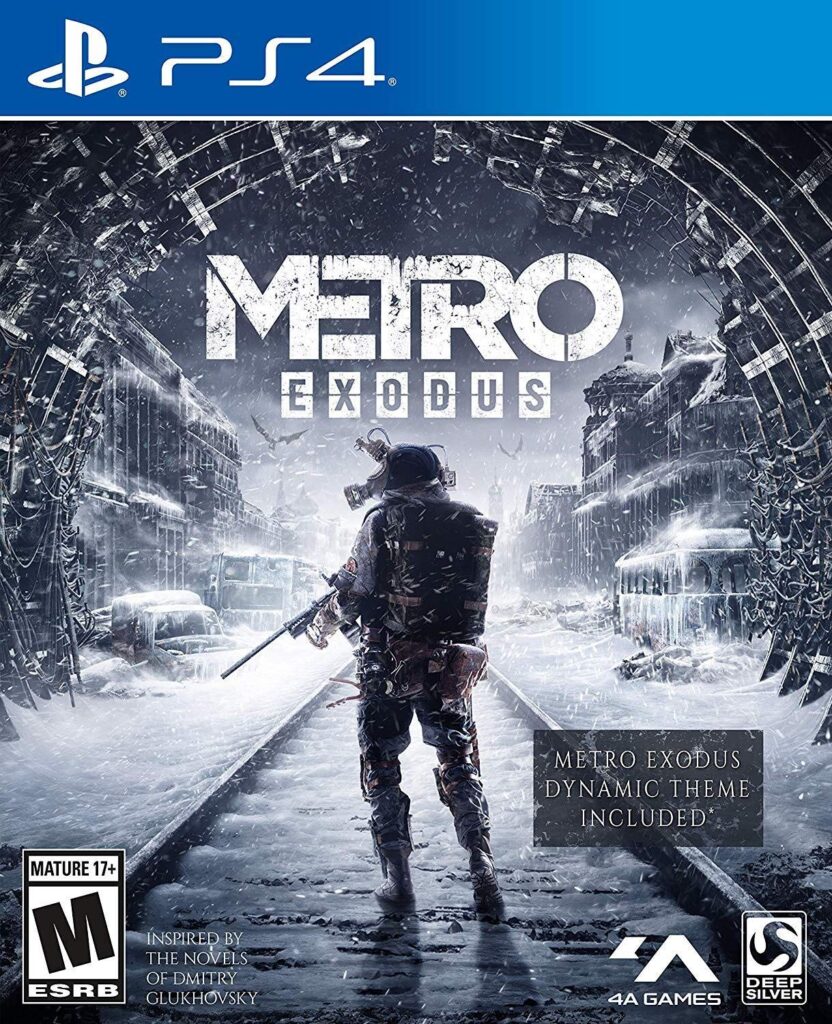
Stop me if you’ve already heard of this: an open-world post-apocalyptic FPS that tasks you with managing resources, killing mutants, and most importantly, surviving. But Deep Silver’s 2019 offering, Metro Exodus offers solid offering into the genre with a Russian-inspired story and a throwback gameplay that is quirky and engaging.
The final game in the three-game franchise by developer 4A Games, Metro Exodus returns you to the videogame adaptation of Dmitry Glukhovsky’s Metro 2035, a novel that imagines you as a ex-miliary and taciturn hero, Artyom, who responds to a distant radio message in the nuclear wasteland of Moscow, and ventures out of the underground tunnels to search for survivors. While I normally tend to phase out overly complicated narratives in my games, Metro Exodus does laudable job in letting the gameplay and mechanics inform your decisions as Artyom even while those very aspects show their age and result in some minor gaming frustrations.
The Nuts and Bolts—What’s the same
The survival gameplay revolves around resource management and crafting. Resources are limited, so you are encouraged to kill enemies with stealth to save bullets. To help you along, the game scatters “workbenches” where you can craft ammunition, health, gas masks, and gun customizations.
Combat comes in two flavors: stealth and screw it, I’m going in loud. Crouching masks your footsteps so that you can—if you choose—sneak up behind enemies and present a button either to stun or to kill your unwitting foe. Exodus’ gunplay is refreshingly simple with headshots that one-shots enemies and standard melee that allows you to bludgeon slowly and rather unremarkably random hostiles.
4A Games furnishes you with traditional crafting mechanics that encourage you to explore the game’s large open-world area. Using any of the aforementioned workbenches spread thoughtfully throughout Moscow Nuclear Hell, you can re-up your ammo and health. At higher difficulty settings, which I recommend, you barely scrape by so that spotting a workbench creates genuine relief.
Karmic Nuts and Nuclear Bolts—What’s different
Where Exodus zags from the predictable zigs of triple A offerings emerges from its morality choices that affect the ending, of which there are numerous outcomes from unrelentingly depressing to slightly less depressing. Thus, if you want that “good” timeline, knocking out rather than killing is the way to go. Moreover, certain completing certain side missions affect your morality score, which is calculated entirely underneath the hood of the game. If that’s not enough, you can turn off various light fixtures—torches, lanterns, floodlights, etc—that for some reason is the “right” thing to do; but be careful, this means that the game’s relatively intelligent AI will respond to a flicker and start investigating.
Metro’s world is surprisingly interactive, even if the systems aren’t always well signposted. For instance, the game features a dynamic day/night cycle that can offer you more stealth cover if you decide to attack a dusk but also means you’ll encounter more mutant attacks as you’re traversing the world. The game offers you a bed to fast-forward time.
Metro’s world is irradiated, so your wrist-Geiger-counter watch proves most useful. When the radiation is too high, the Geiger clicking will alert you, and you can don a radiation mask that protects you from the gradual death of radiation poisoning. But even your decisions to wear and take off your mask is tactical; keeping it on when not necessary could lead to damages that range from cracks on your viewable screen to a gaping hole that sucks precious oxygen from your lungs.
Finally, while customization may seem to be a requirement for shooters, Metro’s system allows for me interchangeability than other games. There are two stock weapons (pistol and rifle) that you can “upgrade” by adding a barrel that converts it into a shotgun, or a scope that transforms your gun into a sniper rifle. You find and collect these components from the guns of fallen enemies and can mix and match different components in the workbench.
But is it for me?
The gameplay mechanics actively encourage different playstyles rather than force you into them with elaborate cut scenes and one-off missions. Or, you can stick to your guns and shoot your way out of every situation until you run out of ammo. The dynamic morality and time systems become characters themselves in an already richly designed world, making you feel like you’re up against the clock while traversing a long expanse as it turns to nightfall, or achieving a narrative reward for choosing good. However, the engine is dated. The hitboxes are off resulting in frustrating moments when that one pixel of a branch acts like a bulletproof wall. But in the end, the story and gameplay work well together to create a fulfilling narrative experience and a enjoyable shooty-shooty-bang-bang one as well.